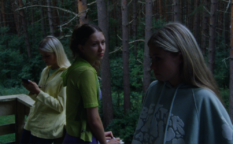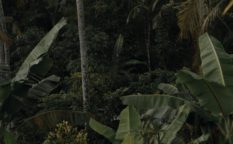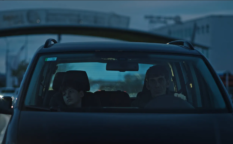Program Overview: Walls (Uppsala International Short Film Festival)
For 38 years, the Berlin Wall divided eastern and western part of the city, East and West Germany, Eastern and Western Block that were engaged in Cold War, and communist and capitalist system with their respective lifestyles. Until it fell, 30 years ago, signalling the victory of one side. That kind of a round anniversary is a perfect occasion for a walk down the memory lane in the form of thematic retrospectives, having in mind how the world (and especially Europe) has changed in that period of time, adopting a number of common policies through the European Union. However, some other walls, fences and barriers are still being built on the Union’s outer borders or within the cities, separating neighbourhoods. But also, in the Middle East where conflicts rarely cease, or on the southern border of the United States of America, where the conflict is being politically engineered through poisoning the public discourse.
Curated by Jukka-Pekka Laakso, the festival director of Tampere Film Festival, and Christoffer Olofsson, the program director of Uppsala International Short Film Festival, the three-part Walls retrospective tries to answer a number of questions regarding the walls, the other forms of barriers and the divisions between the people through short films in different forms (documentaries, fiction, animation, experimental essays). The previous version of it was screened in Tampere in March, while the Uppsala version, which is a subject of this brief overview, was more aligned, calendar-wise, with the anniversary itself.
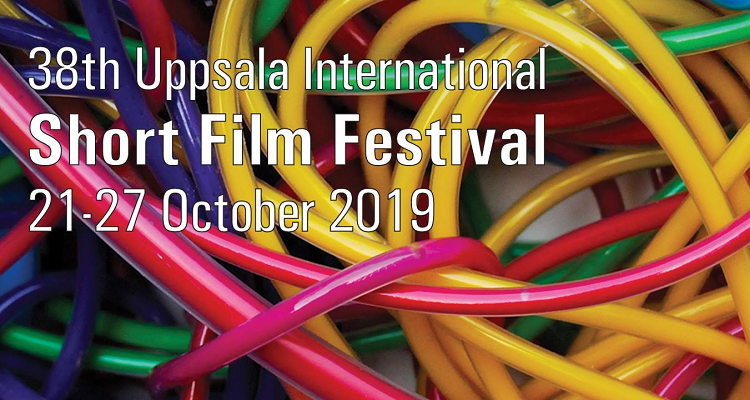
The first chapter of the retrospective, titled Revisiting the Wall, pretty much revolves around the Berlin Wall and the memory of it and what it represented. In Cycling the Frame (1988), directed by Cynthia Beatt, all we see is a young woman portrayed by Tilda Swinton, seemingly continuously cycling around the wall which surrounded West Berlin. She is passing through the different types of neighbourhoods, from city centre (the film starts and ends at the Brandenburg Gate) to the residential, industrial or surprisingly green periphery, observing and sharing the observations, sometimes banal, sometimes philosophical, sometimes nonsensical, but forged into a rhyme. The wall is also present as a character of sorts, sometimes visually in frame, sometimes in the form of sound, specially designed by Simon Turner. It offers a unique testimony about the time that seems long gone, but the conclusion drawn by Beatt and spoken by Swinton, that West Berlin ignores the Wall, has got more layers seen from the distance of over 30 years.
The answer to the question can the Wall be ignored can be found in Berlin Berlin, a mash-up clip of archival footage of political speeches (“Ich bin ein Berliner” included) and a hit parade catchy pop-tune. It can be made fun of, but for the time being, the Wall, the Cold War and the block division were the facts of life. However, those facts of life, at least their physical components like the wall itself, could be influenced somehow, at least artistically, like it is the case with Exchange (1982), a combination of performance art and music video in which a punk-styled girl with spiky pink hair uses a burner to leave a message on the wall stand against the backdrop of neo-romantic electro-pop music. The director Llurex connects the footage from this urban scene to the footage of a dusty Australian landscape, drawing the comparison of the Berlin Wall to the Dingo Fence in Australia, another man-made structure that was supposed to protect the farmlands from the wild animals, but, as a side effect, it also separates the white and aboriginal population.
Other films in the segment deal mostly with the memories of the Wall, Berlin as a city and Western / Eastern Block. The observations change. The memories change. The landscape changes. The social structure changes. Back to Berlin (2012) is a fiction film by Renaud Drovin with at least some of the autobiographical element to it. He also plays the role of Pierre, a French expat who revisits Berlin after being gone for more than 10 years, with a fascination for the times he missed. He communicates with his more and more disillusioned girlfriend in the form of letters, phone calls and video-messages filmed with super-8 camera, trying to make something of his and other people’s memories and the reality that differs from it. To Drovin’s credit, he masterfully interconnects different material (fiction, documentary, essay) shot in different formats, which is enough to bring life to a slightly stock story about being obsessed with own memories of a place and chasing ghosts of the past.
Ellie Land’s take on the memories from the Cold War times was realised through a simple, hand-drawn animation in The Otherside (2007). The simple concept about people sharing their memories directly to the microphone works and does not feel overly exploited. The trick is the honesty and the lack of sentimentality: their task is to share their own memories about the other side of the city: what they had been told, what they saw and even what they found better and wanted for themselves. There is also a lot of honesty to be found in John Smith’s video installation White Hall (2014) in which he narrates about his first experience with the Eastern World when he first came to Warsaw during the Cold War, and how he observed the change in the lifestyle when he came to Leipzig after the Wall came down. The narration is set against the two slowly moving shots of going towards the light at the end of the tunnel and going back to black once the all-white light is reached.
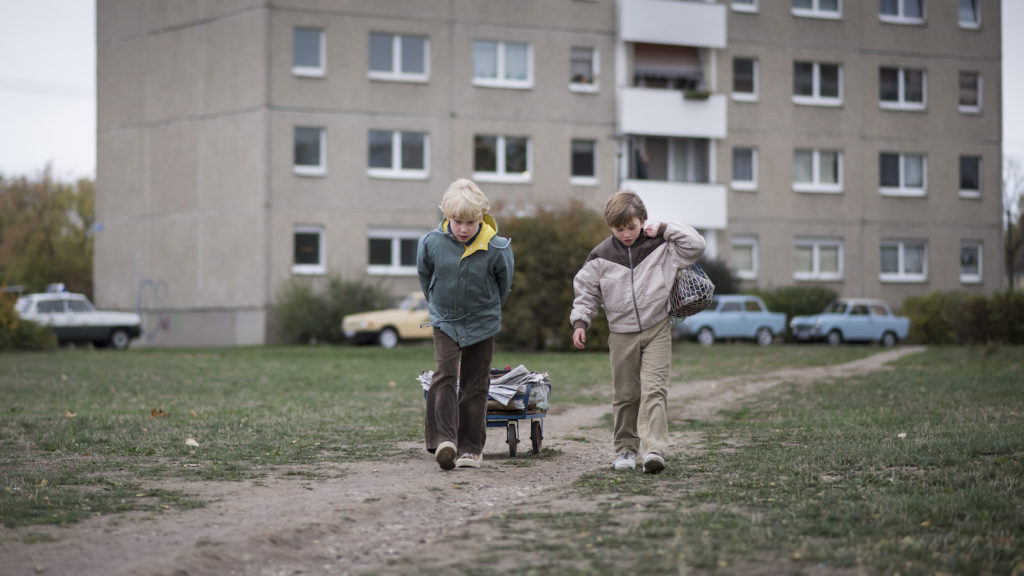
Maybe the most intriguing memory of the time can be found in a completely fictional work The Land Over There (2019) written and directed by Arne Kohlweyer. The distance from the events is evident, since the film was shot digitally, but the dedication to the period details is astonishing, both on the narrative and visual level. The story follows three siblings and focuses on the youngest one, a grade-school boy Marko (Ari Kurecki) who tries to make sense about the events regarding the fall of wall. The school does not offer many answers outside of the framework of the official communist propaganda. The grandfather who takes care of the children while the parents are on a trip has his own memories of his last visit to the West before the Wall was built. The brother Axel (Oscar Ebeling) in his early teens has desires for the goods from the West, like pornographic magazines, while the oldest sister Melanie (Malena Héloise Münch) has to deal with drama of ruined plans for romantic weekend. The Land Over There answers the question of where someone was when something significant happened in a smart, warm and fun way.
The segment Guarding the Wall takes a trip in space in time, away from Berlin Wall, to the walls and fences of the present. Those dividing Israeli and Palestinian territories are a good starting point to examine the case. Joel Novoa Schneider’s fiction film Machsom focuses on Yaniv (Nick Greene), an Israeli soldier who tries to be a pacifist at his work and at his home, but is surrounded by hatred and therefore stays alone in his attempts. Over the course of a day, a night and a following morning, Yaniv has to deal with situations that are beyond his control and that can escalate quickly with frequent terror attack alerts on the busy checkpoint he guards. Ines Moldavski, however, examines the conflict and the division from another perspective in her documentary The Men Behind the Wall, as she tries to Tinder-date the men on the other side of the border. Here, the social issues (the absurdity of segregation) get combined with the dynamics of power and are examined from a specific gender perspective.
Guarding the border can be a lonely job that takes its toll on human psyche. That is something to be observed in Samir Syriani’s Contact (2019) that follows the daily routine of a solitary sniper at the border which is affected when he finds a recorder and a tape on the body of his latest victim: a refugee woman who tried to cross the border. The context here is, of course, the war in Syria with the refugees being refused, sometimes violently, from the neighbouring countries, but the principal question here is: can a guard “just do the job” without suffering the consequences? Black and white cinematography of a desert landscape and the sound design aiming for eeriness and suspense fit the bill perfectly.
Maybe the people who are already lonely and emotionally scarred choose the profession, or at least a hobby that includes guarding borders, which is the case with Adam (John Adams), the protagonist of Oliver Rendón’s Loving South (2017). The location is the Mexican-American border and Adam is a member of militia (the title card at the beginning informs us about The Minuteman Project, a private organization whose members monitor the border for undocumented migrations) who spends his days patrolling, doing chores and listening to sometimes gruesome chatter between his comrades on the radio while waiting for new orders.
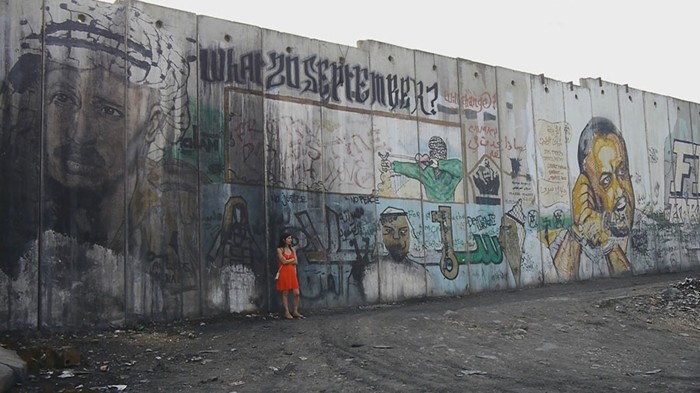
Finally, walls, fences and barriers do not have to have a context of conflict between the nations and the peoples. In his short documentary Supriseville (2010), Tim Travers Hawkins, tackles the topic of gated communities and obsessions of their inhabitants with order and safety that goes so far that they are building the walls to separate themselves from each other. A fairly basic style Hawkins goes for consisting of on-camera interviews with the inhabitants of the titular gated settlement in Arizona and shots of the town itself which looks like a picture-perfect suburbia is not astonishing, but it is functional in the sense of telling a story.
Walls, borders and even natural barriers are not a solution. There are men, women and children who need to get to the other side. Is the freedom of movement just a hypocritical phrase when it applies only for the territory within heavily guarded frontiers? Those are the questions to be dealt with in the last, Breaking the Wall segment of this retrospective.
There is a certain level of absurdity about the walls of Belfast that separate the Catholic and Protestant neighbourhoods, especially after 20 years of the peace treaty that ended the clashes between the British Army and the Irish nationalist rebels in Northern Ireland. But, as stated by the narrator Jonny Byrne from the Institute for Research in Social Sciences of the University of Ulster in Martin Bureau’s documentary 99 Walls (2017), the thing is that the citizens want the walls to stay because they feel safe that way, no matter how the walls affect the structure of the city and how the dismantling of them is predicted in the peace agreement.
At least, there are no walls in Lampedusa, but there are cliffs, beaches and shipwrecks, which take the central stage of Jan Ijäs‘ documentary Waste No. 2 Wreck. Ijäs juxtaposes the imagery of the idyllic Italian island close to the coast of Tunisia before the peak of refugee crisis on the 16mm tape with the poetic narration performed by Rebecca Clamp that touches the number of topics relevant to the island, painting the background of the well-known media-exploited side of the story.
Most of the section, however, is located on the Hungarian-Serbian (fenced) border, exploring the current stalemate with the refugees being stuck on one side, while desperately wanting to get to the other. Frans Huhta and Jaime Alekos with their documentaries Before Our Eyes (2017) and The European Dream: Serbia (2018) use the format to ask the profound ethical questions about the situation on the border and the human cost of the political decisions. Borbála Nagy does a similar thing in the form of fiction short film Minden Rendben focused on Alpar, a Hungarian border guard on his first day of work and the merciless, harsh reality that surrounds him, usually coming in form of the attitudes of his elder colleagues.
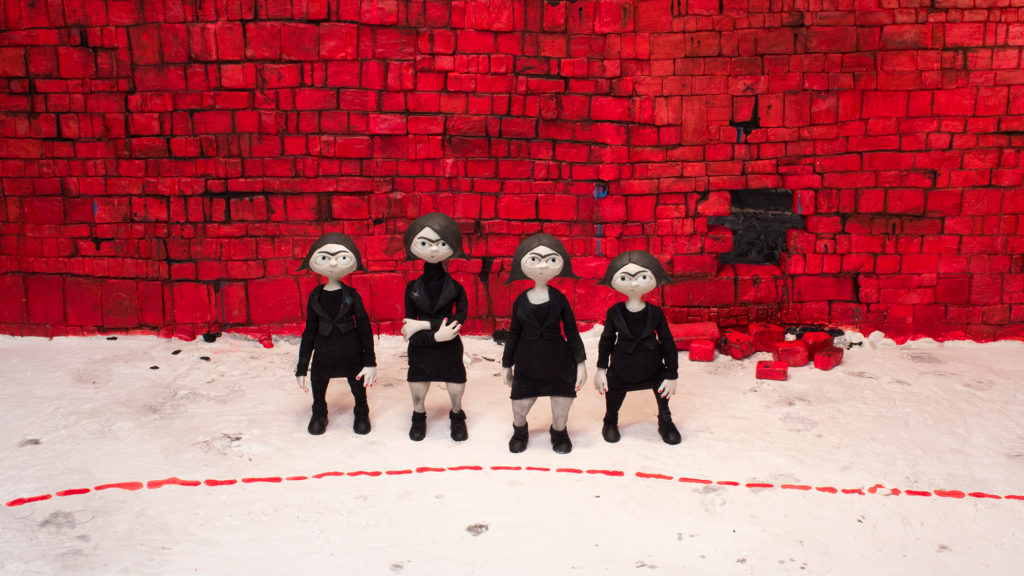
Untravel (2018), a short animated film directed by Ana Nedeljković and Nikola Majdak Jr, on the other side, tells the story of living in isolation and the urge to overcome it through the metaphor of a country enclosed by a wall. A girl who grew up there dreams about going to a magical place called “Abroad”. Although the abstract context works exceptionally well on the global level (Untravel has travelled to many festivals of different kinds), it works even better with an additional, concrete one, about Serbia and its isolation during the 90s that has left long-term consequences to generations of people.
In the end, can we see a statue or statues as a metaphorical wall separating two political blocks and time eras? Can “Leninopad” (“Leninfall”, the trend of toppling Lenin’s monuments in Ukraine after the Euro Maidan) be explained at all. For sure, it is a clash between the different political options, the generations, the two sides in a civil war, different times and narratives. Lenin himself, his work and achievements does not matter much in that context, he is just a symbol and a catalyst of a deeper, block-like social division. Ana Jermolaewa, the director of Leninopad (2017), tried to picture it in the form of a field research documentary, visiting a number of Ukranian cities and villages that once had Lenin’s monuments and talking to locals about the past and the present. In that way, she supports the theory that ideological walls can be more firm and effective than the physical ones that rarely serve their purpose in containing some people, information and lifestyle “in” and some others “out”.













